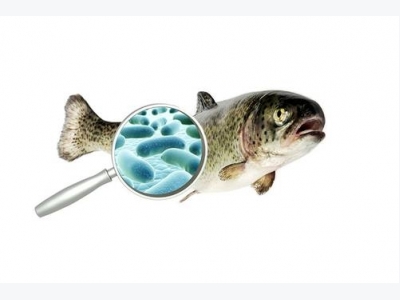Prevent disease outbreaks through effective bacterial pathogen control

Aquaculture is the fastest growing food-producing industry and is currently playing a major role in global protein production. The raising demand for aquatic protein has resulted in intensification of production, which is directly linked with an increased incidence of diseases. Major pathogens affecting the aquaculture industry include fungi, viruses, parasites and bacteria.
Bacterial threats
Bacteria can survive very well in aquatic environments, especially when water temperature rises, and can cause significant economic losses. Bacteria such as Aeromonas, Edwardsiella, Pseudomonas, Streptococcus, Vibrio and Yersinia can all be pathogenic to aquatic animals. Outbreaks of bacterial diseases are usually contained using antibiotics. However, due to growing consumer sentiment opposing the use of sub-therapeutic antibiotics, their use can effectively block producers from selling their product to export markets. Also, extensive use of such antimicrobials is linked to the development of antibiotic resistant strains and the transfer of resistant genes between different bacterial species. The emergence of pathogenic resistant bacteria has negative impacts, not only in aquaculture, but also on human health and effects consumer perception more negatively. Therefore, the demand for more environmentally-friendly alternatives is higher than ever.
Organic acids for pathogen control
Organic acids and blends of such acids are an efficient tool to improve growth performance and pathogen control in aquaculture. Recently researchers have focused on the role of organic acids and their salts in disease prevention and control with great success. While the effects of organic acids on pathogenic bacteria are not yet fully clear, it is commonly understood that they can exert either bacteriostatic or bactericidal effects depending on the physiological status of the organism and the physicochemical characteristics of the environment. Undissociated organic acids are lipophilic and can bypass the plasma membrane of bacteria easily. Once inside the cells, where usually pH levels are more neutral than in the outer environment, organic acids dissociate in their anions and protons. Traditionally, it has been assumed that the cytoplasmic pH drop caused by this mechanism is the main toxic efficacy of organic acids. Recently, other toxicity mechanisms have been proposed like the capability of these acids to interfere with cytoplasmic membranes structure and functionality as well as interference with nutrient transport, electron transport and macromolecular synthesis inside the cells.
Choosing a science-backed solution
The organic acid market in aquaculture is vast, and choosing the correct solution can be a minefield. It is important that products are assessed using both in vitro and in vivo models. A recent peer-reviewed publication demonstrated how Biotronic® Top3 (BIOMIN GmbH), an enhanced acidifier, can be used to reduce pathogens and improve disease resistance in aquaculture (Menanteau-Ledouble et al. 2017).
In vitro pathogen control
Scientists cultured a number of pathogens in growth medium, with and without Biotronic® Top3. The pathogens were chosen based on their ability to cause widespread disease and high economic losses in aquaculture and included Aeromonas spp., Edwardsiella sp., Pseudomonas sp., Streptococcus sp., Vibrio spp. and Yersinia sp. Researchers observed that Biotronic® Top3 effectively reduced the growth of all pathogens (Figure 1). Biotronic® Top3 was most effective against Gram-negative pathogens, although inhibition of Streptococcus was also observed. This is not surprising, since the formulation contains a unique Biomin® Permeabilizing Complex, specifically designed to weaken the outer membrane in Gram-negative bacteria.

Figure 1. Growth inhibition of aquatic pathogens by Biotronic® Top3.
In vivo results
Aquaculture systems and the animals involved are infinitely more complex than their simplified in vitro models. In one study, specific pathogen free (SPF) rainbow trout (Oncorhynchus mykiss), were split into two groups, and received either a commercial feed or the same feed supplemented with Biotronic® Top3. After 25 weeks, fish were artificially infected with Aeromonas salmonicida by intraperitoneal (IP) injection, immersion and cohabitation. For quality control purposes, fish in both treatments were also ‘mock’ infected to take into account background mortality. Once the infection had taken its course, the survival was calculated (Figure 2). In control tanks, mortalities were observed immediately indicating the pathogens virulence, while in Biotronic® Top3 treatments much slower death rates were seen, indicating that the infection could be slowed down. This may benefit fish farmers as they can identify diseases without incurring huge losses. After 35 days of challenge, Biotronic® Top3 supplemented fish showed considerably higher survival (80%), compared to just 60% in control tanks, indicating the protective capabilities of Biotronic® Top3. Furthermore, rainbow trout receiving Biotronic® Top3 had significantly higher survival (70%) than those not receiving the supplement (25%), when challenged via IP injection.

Figure 2. Survival curves of fish during pathogen challenge. Data represents the average mortality across three infection routes. Source: BIOMIN
Conclusion
Disease outbreaks are a persistent threat to profitability. Dietary supplementation of Biotronic® Top3 improves gut health by reducing the pathogen load and increases disease resistance without compromising growth performance. By allowing aquaculture producers to avoid sub-therapeutic use of antibiotics, Biotronic® Top3 offers an exciting alternative to traditional pathogen control measures, opening the door to higher profitability.
This article originally appeared in International Aquafeed.
About Authors: Antonia Tacconi, PhD – Product Manager Acids, and Benedict Standen, PhD – Product Manager Microbials at BIOMIN, Austria
Related news
 Surprising results in rabbitfish diet evaluation
Surprising results in rabbitfish diet evaluation There is a need for aquaculture of algaevorous fish in order to improve sustainability and green credentials of the industry, and it is imperative to decrease
 Largemouth bass responses to supplemental EPA, DHA
Largemouth bass responses to supplemental EPA, DHA In recent years, the aquaculture industry has faced a rapid shift in raw materials used in feed formulations with a departure from marine-based to (largely)
 F3 takes on a new challenge – fish oil alternatives
F3 takes on a new challenge – fish oil alternatives Building off the success and excitement of the fish-free aquaculture feed cash-prize contest that concludes this fall, the F3 Challenge has set its sights